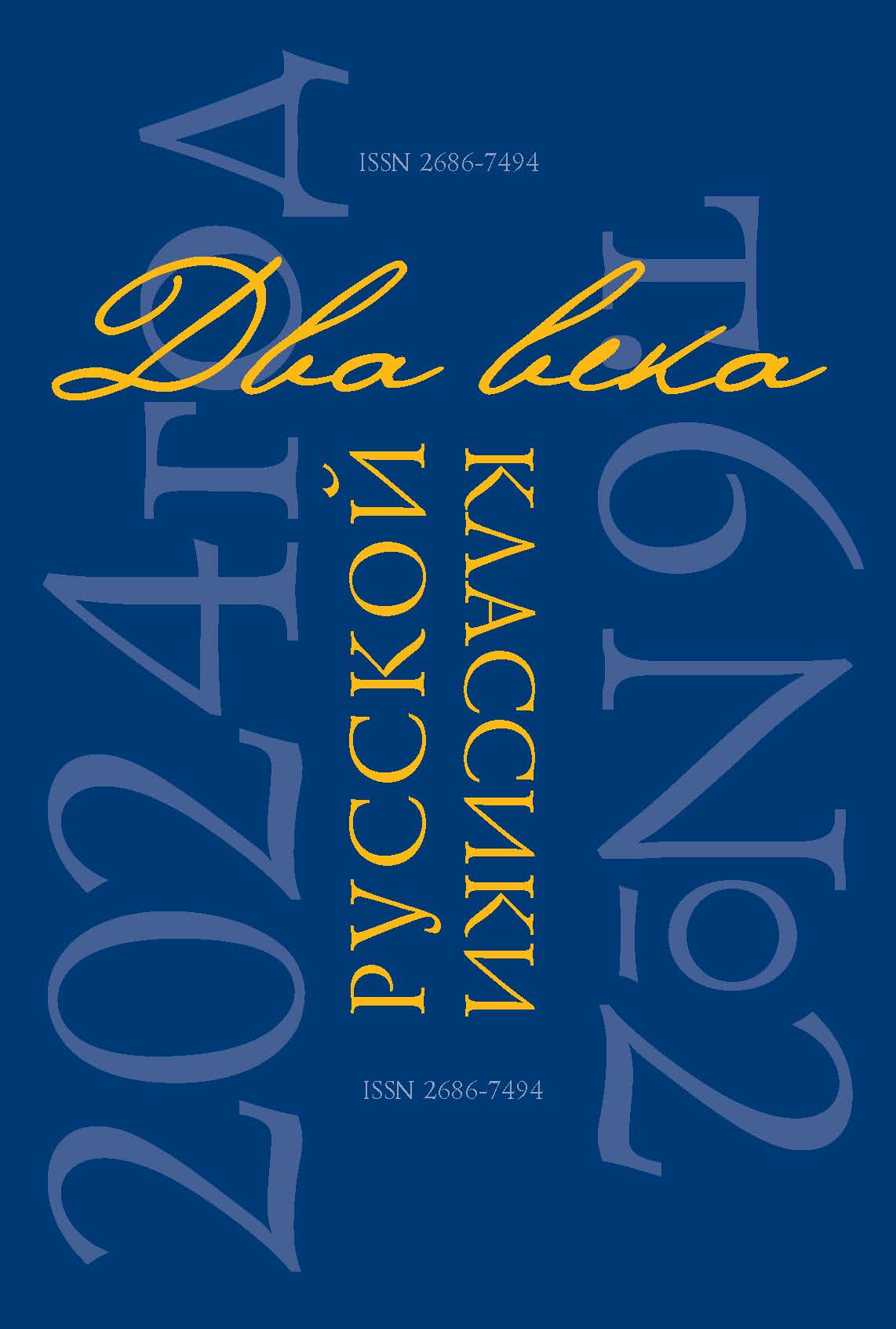Abstract: The purpose of this article is to reconstruct the history of the novel “Decembrists” by L. N. Tolstoy in the 1870s. For the first time the stages of creation of this work are considered holistically, with a detailed analysis of the formation of all the key storylines and imagery. First the idea of the resettlement line was born (winter 1874–1875, March 1877), then the subject of the employment of peasant life were in the center (May – October 1877); later the topics of litigation between peasants and landowner for the land and the Decembrists merged (united) with them (November 1877–1878). The problem of relations between the noble hero and the common people became the main connecting factor of these parts. This problem took a new angle in the story of the disappeared face, which is about the tragic death of the father of the future Decembrist, Prince Gagarin (December 1878 – January 1879). The religious and philosophical searches of the writer that prepared the address to “Confession” at the end of 1879, had the influence on the subject matter of this work also. The figurative system of the novel was formed on the basis of archival documents (historical theme) and the personal observations of the author (country theme). The study of Tolstoy's work on the historical novel about the Decembrists according to the presented plan made it possible to study comprehensively the voluminous documentary, biographical and handwritten material and to answer the main question: why the plan of the monumental historical canvas did not take place and the novel was left at the peak of creative searches? A decisive role in this was played by the departure of Tolstoy from the already mastered forms of artistic creativity, which was outlined in this period. A new road was laid in the life, work and outlook of the writer. It was a time for “Confession”, religious and philosophical treatises and folk literature.
References
- Vosstanie dekabristov. Dokumenty. T. XVI. Zhurnaly i dokladnye zapiski sledstvennogo komiteta [Decembrist uprising. Documentation. Vol. XVI. Journals and reports of the investigative Committee]. Moscow, Nauka Publ., 1986. 399p. (In Russ.)
- Vosstanie dekabristov. Materialy. T. VIII [Decembrist uprising. Materials. Vol. VIII]. Moscow; Leningrad, Gosudarstvennoe izdatel'stvo Publ., 1925. 432 p. (In Russ.)
- Gessen L. A. Rabota L. N. Tolstogo nad arkhivnymi materialami [The Work of L. N. Tolstoy on archival materials]. Istoricheskii arkhiv [Historical archives]. 1958. no 3, pp. 216–218. (In Russ.)
- Gladkov B. I. Tolkovanie Evangeliia [Interpretation of The Gospel]. Sviato-Troitskaia Sergieva Lavra Publ., 2002. 776 p. (In Russ.)
- L. N. Tolstoi i N. N. Strakhov. Polnoe sobranie perepiski: v 2 t. [L. N. Tolstoy and N. N. Strakhov. The complete collection of the correspondence: in 2 volumes]. Ottava, Universitet Ottava Publ., 2003. V. I. 488 p. (In Russ.)
- Makovitskii D. P. U Tolstogo. 1904–1910. Iasnopolianskie zapiski [In Tolstoy. 1904–1910. Yasnaya Polyana notes]. Literaturnoe nasledstvo. T. 90: v 4 kn. [Literary heritage. Vol. 90: in 4 books]. Moscow, Nauka Publ., 1979. B. 1. 544 p. (In Russ.)
- Nikolai Mikhailovich, Vel. kn. Imperator Aleksandr I. Opyt istoricheskogo issledovaniia: v 2 t. [Historical research experience: in 2 volumes]. S.-Peterburg, Ekspeditsiia zagotovleniia gosudarstvennykh bumag Publ., 1912. V. 2. 745 p. (In Russ.)
- Opisanie rukopisei khudozhestvennykh proizvedenii L. N. Tolstogo [Description of manuscripts of works of art L. N. Tolstoy]. Moscow, Izdatel'stvo AN SSSR Publ., 1955. 634 p. (In Russ.)
- Paramonova I. Iu. L. N. Tolstoi i «delo byka» [L. N. Tolstoy and «the bull's business»]. Iasnopolianskii sbornik-2006 [Yasnaya Polyana collection-2006]. Tula, pp. 297–304. (In Russ.)
- Tolstaia S. A. Dnevniki: v 2 t. [Diaries: in 2 volumes]. Moscow, Khudozhestvennaia literature Publ., 1978. V. I. 608 p. (In Russ.)
- Tolstaia S. A. Moia zhizn': v 2 t. [My life: in 2 volumes]. Moscow, Kuchkovo pole Publ., 2011. V. 1. 608 p. (In Russ.)
- Tolstoi L. N. Polnoe sobranie sochinenii: v 90 t. (Iubileinoe izdanie) [Complete works: in 90 volumes (Anniversary edition)]. Moscow; Leningrad, Khudozhestvennaia literature Publ., 1928–1958. (In Russ.)
- Tolstoi L. N. Polnoe sobranie sochinenii: v 100 t. [The complete works: in 100 volumes]. Moscow, Nauka Publ., 2000 —. V. 4. Moscow, Nauka Publ., 2001. 376p. (In Russ.)









